Extended Protection Showdown: Cadillac's Extended Limited Warranty vs. Third-Party VSCs
Understanding Cadillac's Extended Limited Warranty
When you consider extending the life of your Cadillac's coverage, the manufacturer's own offering is often the first place to look. The Cadillac Extended Limited Warranty is essentially an extension of your original factory bumper-to-bumper warranty, provided directly by General Motors (GM), the parent company of Cadillac. This means it's designed specifically for your vehicle, utilizing genuine GM parts and serviced by certified Cadillac technicians who know your car inside and out.Typically, this warranty extends the original coverage period, offering similar protection against defects in materials or workmanship for major components. Opting for the Cadillac Extended Limited Warranty provides a seamless experience, as repairs are always performed at authorized Cadillac dealerships. This ensures that your vehicle receives specialized care tailored to its complex systems and luxury specifications, maintaining its integrity and value. There's an inherent trust that comes with a manufacturer-backed plan, as the entity that built your car is also the one standing behind its extended protection. It often means a straightforward claims process and a high standard of repair quality.
Diving into Third-Party Vehicle Service Contracts (VSCs)
On the other side of the ring, we have Vehicle Service Contracts (VSCs) offered by independent, third-party companies. These are not warranties in the traditional sense, but rather service agreements where the provider promises to cover specific repairs for a set period or mileage, often for a predetermined premium. The market for third-party VSCs is vast, with numerous companies offering a wide array of plans designed to fit different budgets and needs.Third-party VSCs come in various flavors, from basic powertrain coverage (engine, transmission, drive axle) to more comprehensive 'bumper-to-bumper' style plans that mimic factory coverage, though often with more exclusions. One of the main appeals of these plans is their flexibility and often competitive pricing compared to manufacturer-backed options. They might offer different deductible structures, longer terms, or options for older, higher-mileage vehicles that may not qualify for a manufacturer's extended warranty. However, this flexibility also comes with the responsibility of careful research. The reputation, financial stability, and contract terms of the third-party provider are paramount, as the quality of coverage can vary significantly from one company to another.
The Head-to-Head: Key Differences Unpacked
Let's put these two contenders side-by-side to highlight their fundamental distinctions, helping you see where each truly shines—or falters—in the context of your Cadillac ownership experience.Scope of Coverage
The Cadillac Extended Limited Warranty is a direct extension of your factory warranty, meaning its scope is typically very similar to the comprehensive coverage you received when the car was new. It's designed to cover defects in materials and workmanship, ensuring that components function as intended by the manufacturer. This often translates to fewer 'surprises' in terms of what's covered.Third-party VSCs, while potentially offering extensive coverage, are contracts that list exactly what they cover (or, more commonly, what they *don't* cover). Their 'bumper-to-bumper' plans aim to be comprehensive, but they almost always have a longer list of exclusions than a factory-backed plan. You'll need to scrutinize the contract's fine print to understand the specific components and scenarios covered, as well as wear-and-tear items that are typically excluded across the board. The language can be complex, and comparing plans across different providers requires diligent attention to detail.
Repair Facilities and Parts
With a Cadillac Extended Limited Warranty, all covered repairs must be performed at an authorized Cadillac dealership. This ensures that genuine GM parts are used and that the work is carried out by technicians specifically trained on Cadillac vehicles. This provides a consistent level of quality and expertise, often using specialized diagnostic tools and procedures.Third-party VSCs often offer more flexibility in terms of repair facilities. Many allow you to take your Cadillac to any ASE-certified mechanic, which can include independent shops as well as dealerships. While this offers convenience and potentially more options if you're far from a Cadillac dealer, it also means you're relying on the third-party provider's approval process for repair costs and potentially on non-OEM parts. While reputable independent shops are excellent, some owners prefer the guaranteed expertise and genuine parts offered by a dealership, especially for a luxury vehicle.
Deductibles and Claims Process
The claims process for a Cadillac Extended Limited Warranty is generally straightforward. You take your vehicle to a Cadillac dealership, they diagnose the issue, and if it's a covered repair, they handle all the paperwork directly with GM. Deductibles, if any, are usually clear and paid directly to the dealership at the time of service.Third-party VSCs can have a more varied claims process. Some operate on a direct-pay model, where the provider pays the repair shop directly after approval. Others might require you to pay for the repair upfront and then submit a reimbursement claim, which can be a financial burden for larger repairs. Deductibles can also vary, sometimes even per repair or visit, and there can be waiting periods before coverage takes effect. The authorization process can sometimes be slower, potentially leading to delays in getting your Cadillac back on the road.
Transferability and Resale Value
Both Cadillac's extended warranty and third-party VSCs can typically be transferred to a subsequent owner, which can be a significant selling point when it comes time to part with your vehicle. A transferable extended protection plan adds value and peace of mind for potential buyers, making your Cadillac more attractive in the used car market.However, a manufacturer-backed Cadillac Extended Limited Warranty might carry more weight and inspire greater confidence in a buyer, especially one who values the integrity of the Cadillac brand and the assurance of dealership-only service. For third-party VSCs, the transferability often depends on the specific contract terms and may involve a transfer fee. Buyers will also naturally investigate the reputation and financial stability of the third-party provider, which can influence their perception of the contract's value.
Making Your Choice: What to Consider
Deciding between Cadillac's own extended limited warranty and a third-party VSC is a personal decision, heavily influenced by your individual priorities, budget, and risk tolerance. Here are some key factors to weigh before making your final choice for your Cadillac's long-term protection.First, consider your **budget**. While third-party VSCs can sometimes appear cheaper upfront, ensure you're comparing apples to apples in terms of coverage and deductible. Factor in the total cost over the contract's life. Next, think about your **driving habits** and how long you plan to keep your Cadillac. If you put on a lot of miles or plan to own it for many years, comprehensive coverage becomes even more vital. Your **service preferences** also play a big role: do you prefer the guaranteed expertise and genuine parts of a Cadillac dealership, or are you comfortable with a wider network of certified repair shops?
Perhaps most importantly, **research the provider thoroughly**. For a third-party VSC, check online reviews, ratings with organizations like the Better Business Bureau, and their financial stability. A great contract is only as good as the company backing it. Understand the **fine print**: always read the sample contract carefully to know exactly what's covered, what's excluded, and the claims process. Don't be afraid to ask questions. Ultimately, the 'best' option is the one that gives you the most confidence and peace of mind, ensuring your Cadillac continues to deliver that luxury driving experience without unexpected financial burdens.
Conclusion
The journey of Cadillac ownership is a premium experience, and safeguarding that experience with extended protection is a wise decision. Whether you opt for the steadfast, manufacturer-backed Cadillac Extended Limited Warranty or a potentially more flexible third-party Vehicle Service Contract, both aim to shield you from the financial sting of unforeseen repairs. The Cadillac option offers unparalleled brand-specific expertise and genuine parts, ensuring your vehicle remains authentically Cadillac. Third-party VSCs, on the other hand, can provide a broader range of options and flexibility, though they demand meticulous research into their terms and provider reliability. There's no single 'right' answer; the optimal choice for your luxury vehicle hinges on your personal comfort with risk, your budget, and how you value brand-specific service versus broader repair network options. By carefully considering all the points discussed, you can confidently navigate this extended protection showdown and secure the ideal coverage, allowing you to enjoy every mile in your Cadillac with ultimate peace of mind.Where can I find my VIN?

Related Topics
- Bumper-to-Bumper vs. Powertrain: Understanding Your Mitsubishi New Vehicle Limited Warranty
- Transferring Your Audi Warranty: A Guide for Selling or Trading In Your Vehicle
- Beyond the Factory Gates: Exploring Volkswagen's Extended Warranty Options (Drive Easy Program)
- Is the Mercedes-Benz Extended Limited Warranty Worth the Price? A Deep Dive

